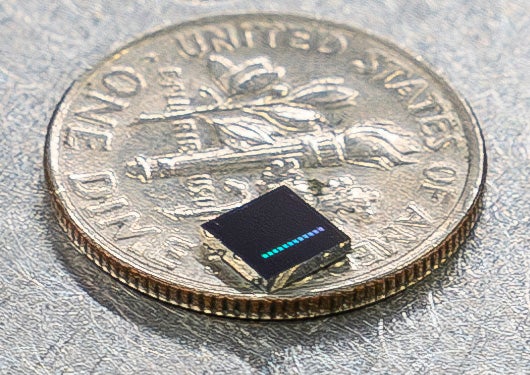Groundbreaking Rice Research Shows Promise in Advancing Quantum Networks
Rice University engineers have demonstrated a way to control the optical properties of atomic imperfections in silicon material known as T centers, paving the way toward leveraging these point defects for building quantum nodes for large-scale quantum networks.

“T centers are a type of atomic defect in the regular lattice of silicon,” said Songtao Chen, assistant professor of electrical and computer engineering. “T centers have been generating a lot of interest recently because they show potential as qubit building blocks for quantum networking. They emit single photons at an advantageous wavelength for telecommunication applications, but they suffer from a low photon emission rate.”
Spontaneous emission ⎯ the phenomenon behind the familiar glow of a firefly or other glow-in-the-dark effects ⎯ describes the process by which a quantum mechanical system, like a molecule, atom or subatomic particle, transitions to a lower-energy state by releasing some of its energy in the form of a photon. Enhancing the rate of spontaneous emission in T centers is one of the hurdles that scientists need to overcome in order to make T center-based qubits viable.

By embedding a T center in a photonic integrated circuit, Songtao and his team increased the collection efficiency for T center single photon emission by two orders of magnitude compared with typical confocal-type experiments. According to a study published in Nature Communications, the team demonstrated that coupling with a photonic crystal cavity enhances a T center’s photon emission rate by a factor of seven, exploiting a phenomenon known as the Purcell effect.
“The goal of our experiment was to demonstrate the ability to modify the optical properties of single T centers in silicon,” said Rice graduate student and study co-author Yu-En Wong. “It turns out that the photonic cavity structure does impact the T center photon emission rate. By measuring the rate with and without the cavity interaction, we were able to gauge the strength of the coupling between the cavity and the T center.”
The coupling between the photonic cavity structure and T center grows stronger as they exchange photon energy increasingly rapidly, shortening the time that energy is stored in the T center.
“This is what’s commonly known as the Purcell effect,” said Rice graduate student and study co-author Adam Johnston. “What we’ve shown here is that we can deploy the Purcell effect to achieve the purest single photon emission among all color centers in silicon to date and the largest photon emission enhancement for a single T center.”
The finding is a significant step toward advancing quantum networks, which rely on the quantum properties of photons to encode information, allowing for both significantly more powerful computing as well as enhanced security.

“The security of quantum communications is guaranteed by the fundamentals of quantum mechanics, enabling detection of eavesdroppers with a high probability and thus improving the protection of sensitive data,” said co-author Ulises Felix-Rendon, who together with Johnston and Wong is pursuing a doctorate in applied physics as part of the Chen lab.
“Companies such as Google and IBM have demonstrated significant advantages of quantum computers over their classical counterparts,” Felix-Rendon said. “However, many of the world’s most advanced quantum computers are restricted to sending information over wires cooled to cryogenic temperatures, which limits the scalability of these systems. We hope our work will be instrumental for developing quantum networks to connect remote quantum computers and moving past current roadblocks in quantum technology.”
The research was supported by the National Science Foundation (2238298), the Robert A. Welch Foundation (C-2134) and the Rice Faculty Initiative Fund. The authors further acknowledge the use of cleanroom facilities supported by the Shared Equipment Authority at Rice.

